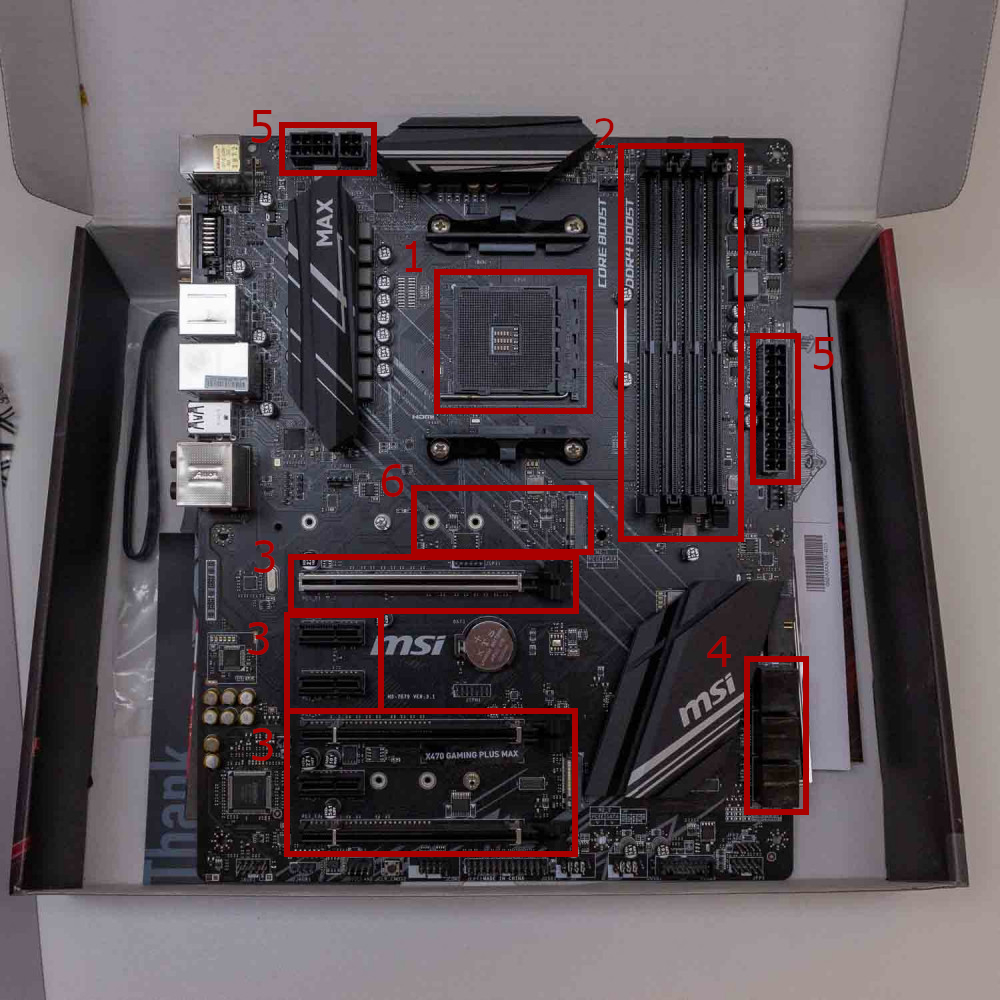Noobs' Guide to Motherboards
Danny Gonzalez on Jan 10th 2025
If you're reading this article, it's because you either really like motherboards, you're new to PC building in general, or you have a terrible memory. In any case, this little article here will serve as your first step (technically second after choosing a tower) to getting familiar with your PC.
What is a motherboard?
A motherboard is the main printed circuit board (PCB) found in computers and other technological devices. It serves as the central hub that connects all the other components of the system, such as the CPU, memory, storage, and peripherals. Essentially, the motherboard acts as the foundation that allows all the parts of a computer to communicate and work together seamlessly. We'll get into the key components down below. Most motherboards have different form factors as well, going from smallest to largest. Those form factors are mITX (Mini ITX for the smallest desktops), mATX (Micro ATX, slightly larger), ATX (standard size), and eATX (Extended ATX). We'll distinguish between those in the future. For now, let's focus on ATX since they're the most common.
Key components of a motherboard
In this section, you'll find a list of key connectors found on every motherboard. Don't worry, I'll also explain what they do. I even included a color-coded picture for reference!

1) CPU Socket: The CPU Socket is the square socket at the top of the motherboard that seats the single most important component of any device- The Central Processing Unit. However, not all CPU sockets are created equal. The kind of CPU you get (AMD/Intel) will determine what kind of socket is required. and what kind of CPU Socket is required will determine what motherboard you should get. For current AMD Ryzen 1000-5000 CPUs, the required socket is AM4. For Ryzen 7000, the socket is AM5. Things are a little bit different for Intel with the required sockets being LGA1700 for all 12th, 13th, and 14th Gen CPUs. If you're a bit confused about CPUs, I'll address those in a future article, so stick around.
2) DIMM Slots: Dual In-line Memory Module (DIMM) is the set of slots that sit right next to the CPU Socket. Their sole purpose in life is to allow the user to install different RAM (Random Access Memory) sticks into each slot. Again, I'll fill you in on the details in an upcoming article. So stick around for that as well.
3) PCIe Bus: The PCI Express (PCIe) Bus/Busses is the group of short and long slots that sit below the CPU Socket. You'll notice that some are longer than others. And that's because the longest ones are meant for the Graphics Processing Unit (GPU/Graphics Card), while the smaller ones are typically used for sound cards and network (WiFi) cards.
4) SATA Port: SATA Ports are the group of connections clustered together that sit on the outer edge of every motherboard. They allow the user to connect both storage devices (HDD/SSD) as well as optical drives (Disk Drives).
5) Power Connector: All modern motherboards carry two of these- A long one at the outer edge next to the DIMM slots, and a smaller connector to the left of the CPU Socket. They deliver power to the entire motherboard as well as the RAM and CPU. Be warned, however. They do not deliver the necessary power to your storage devices or your GPU. Those devices have separate connections built into them that plug into the Power Supply.
6) M.2 Slot: If you're one of the cool kids and decide to purchase a higher performance ATX board, you'll notice a smaller slot to the right of the PCIe slots, which also has a little screw next to it. That is the M.2 Slot. The M.2 slot allows the user to plug in a smaller form factor SSD, which looks like a little stick (or a Data Shard if you've played Cyberpunk 2077 or watched Edgerunners), called an M.2 Drive. Note that not all M.2 drives are created equal, some being known as NVMe (Non-Volatile Memory). Again, I'll explain in another article.
If you've made it this far, the congratulations. You are now familiar with all of the most basic components in a motherboard. There are more slots and manufacturer specific features, however they vary between boards and makes. Please be sure to consult your owner's manual for all those details. Let me know if this has been of any help. And if you have questions, feel free to reach out!





